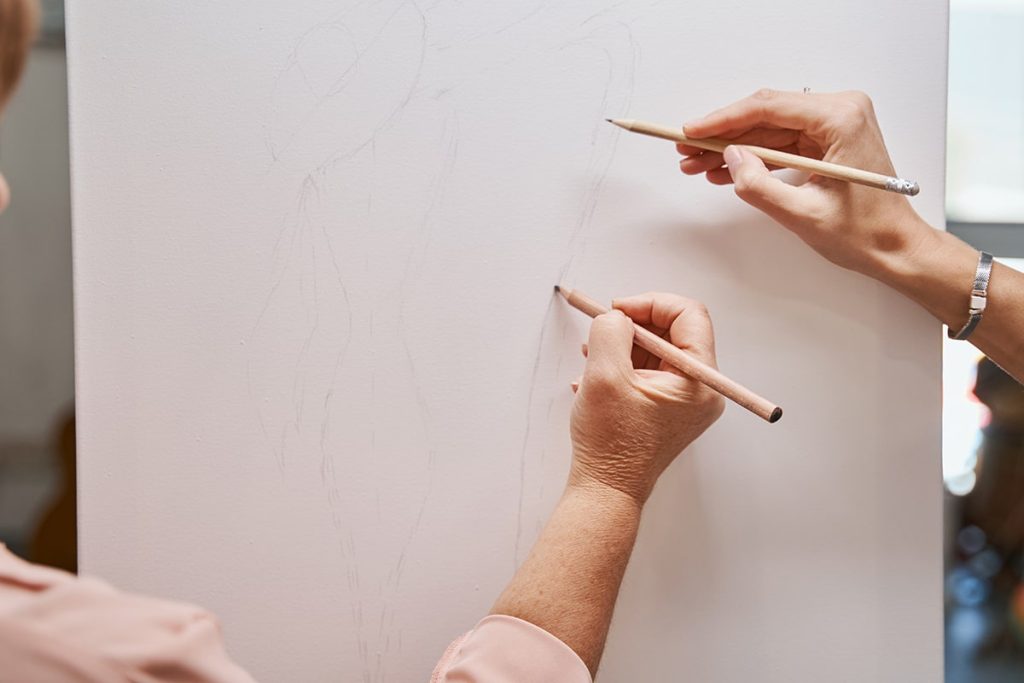
A breakdown of Animation studios
The animation industry is booming amidst the business cultural shift towards remote work. More and more companies are finding success in producing high-quality animated content for a variety of platforms. Due to the versatile and budget-friendly nature of Animation, it can easily be incorporated into any organisation’s existing content strategy without causing disruption. Animation studios come in many shapes and sizes though, ranging from independent operations to large-scale production houses. Each type of studio offers unique advantages for both the artist and the client, making it important to understand the differences between them. This article will provide an overview of the major types of animation studios and their characteristics. From traditional hand-drawn animation to modern computer-generated imagery, a variety of techniques are employed by these studios in order to create stunning visuals. We will also take a look at some notable examples in each category so that you can get an idea of the range of possibilities available within the industry.

The Types of Animation Studios
Traditional animation studios: These studios specialise in traditional or hand-drawn animation techniques, which involve creating each frame of the animation by hand. This style of animation is very costly and time-consuming to produce but can be used to create a truly original viewing experience. This style of animation is best suited for high production value content for large brands. It is also used considerably in the entertainment industry.
Stop-motion animation studios: These studios specialise in creating animations using stop-motion techniques, where physical objects are moved and photographed frame-by-frame. This is another costly and time-consuming form of animation, as each frame must be carefully constructed. This style of animation requires a great deal of planning and resources, which results in much shorter animated clips. Much like traditional animation, it is best suited to high production value content for large organisations. It is also typically used in the entertainment industry.
Visual effects studios: These studios use special effects techniques to create realistic or fantastical visual elements in live-action movies or TV shows. Best suited for the entertainment industry as this style of animation requires large budgets and big teams to produce. There are use cases for it when producing high-production value marketing content for larger organisations, but that is the exception rather than the rule.
Computer animation studios: These studios use computer software and animation tools to create 2D or 3D animations. This is the most common form of animation and is by far the most versatile and budget-friendly. It is used by most organisations and is the perfect tool for comprehensive marketing and communication campaigns as the animated assets can easily be adapted and updated for content repurposing. This works great when you plan on sharing your content on multiple platforms as each platform has its own optimisation strategy that may impact the production process.
Motion graphics studios: These studios create animated designs and graphics for use in videos, websites, and other digital media. This is by far the most common form of animation as it features in every video we consume. It must be said that, typically most content production companies will produce their own motion graphics, which means finding one that specialised in motion graphics is somewhat of a futile exercise, rather look for an agency that produces the style of video or animation you like and review their motion graphics accordingly.
3D modelling and rendering studios: These studios specialise in creating 3D models and realistic renderings for use in animations, movies, video games, or architectural visualisations. This style of animation is particularly well-suited to specialised training and explainer videos, as complex machinery and systems can be modelled in 3D for accurate visual depictions. A great example would be health and safety induction training, where every detail is vital to the training.
Each type of animation studio has its unique strengths and applications, but all share a common mission to create captivating and visually engaging animations. Some animation studios also provide a bespoke offering that may include multiple styles of animation, it is worth perusing their portfolios to gain insights into their creative capabilities.

Must-Have Skills for Animation Studios
Artistic skills:
The foundation of animation lies in art. It is essential to have a good sense of colour theory, composition, and perspective to create visually appealing animations. An animator should have strong skills in figure drawing and storyboarding to create believable characters and narratives. Drawing and painting can help animators to express their creative vision better.
Time management skills:
Animation is a time-consuming process. It requires a lot of planning, production, and editing. Animators should have excellent time management skills to meet deadlines and deliver the best quality work. They should have a sense of time to break down the entire Animation process into manageable tasks. Time management skills can help animators to stay on track and deliver work on time. Time management is heavily influenced by communication, collaboration and refined project management. It is important to realise there is a give and take to keeping your deadlines. Animation production requires strict stages, each of which needs to be finalised before the next one can proceed. From a client perspective, this means adhering to feedback sessions and organisation of key team members.
Creative skills:
Animation is not just about technical skills and tools. An animator should have creative skills to bring life to the characters. They should have the ability to imagine the impossible and bring it to reality through Animation. Good storytelling skills can help animators to create engaging narratives and connect with the audience emotionally. Having creative skills can help animators to stand out from the rest and create unique and original Animations. Another major element of creativity is the ability to think outside the box. Finding ways to execute ideas with fewer resources, refining the production process and solving potential production challenges without compromising on the deliverables. This is a skill that only comes with experience, so make sure your chosen Animation studio has been around for a while.
Technical skills:
In today’s digital era, an animator should have technical skills in software like Adobe Photoshop, Illustrator, and After Effects. They should have an understanding of 3D modelling and rigging software like Maya, Blender, and ZBrush. Knowing how to use these tools can help animators to create 2D and 3D art, motion graphics, and special effects. It is a must-have skill in the Animation industry. There are so many different styles of Animation, each with its own nuance. Make sure the Animation studio you are working with is experienced in the styles of Animation you are looking for.
Communication skills:
Communication is an essential skill in the Animation industry. Animators collaborate with other artists, writers, and voice actors to create Animations. Having good communication skills can help animators to express their ideas clearly and avoid misunderstandings. They should be able to take feedback and criticism and incorporate them into their work. Good communication skills can help animators to work better in a team and create excellent Animations. At the end of the day, when two parties with different expertise come together to produce content, collaboration is absolutely vital. An experienced Animation studio will put a strong emphasise on communication and collaboration from the outset.
Animation studios require a blend of artistic, technical, and creative skills. An animator should have an eye for aesthetics, a good understanding of technology, excellent time management skills, and communication skills. Creativity is the heart of Animation that brings characters to life and connects with the audience. If you want to work in an Animation studio or create Animations, you should develop these skills and enhance your portfolio. With hard work, patience, and creativity, you can be one of the best animators in the Animation industry.

The Animation Production process
When it comes to animation production, there is a best-practice process that most animation studios follow. It creates a structure that helps streamline the individual tasks and collaborative efforts of the production. Sometimes it is difficult to adhere strictly to the process, but with a professional animation studio, they will easily be able to adapt the process to get the project done on time and within budget.
Conceptualisation and Development – The animation production process begins with an idea that may have come from the client or the animation studio itself. The artists in the studio work with the clients to understand their vision and come up with concepts that would make the final product an effective one. Once the concept is approved, the development phase begins. This involves creating storyboards, character designs, and backgrounds that bring the concept to life. During this phase, it is of vital importance that you include your marketing and content strategy, as each platform of distribution has its own meta-game and SEO strategies. If you neglect these your content will not perform as well as it should.
Pre-Production – Now that the concept has been developed, the pre-production phase begins. During this phase, the script is finalised, and the preparation of the animation process occurs. The scope of work is defined, and the production schedule is created. The pre-production phase is critical, as it lays the foundation for the animation production to be executed correctly. If you are working with the same animation studio, this phase may be streamlined depending on the animated resources created in previous projects. This also means you should have existing content templates and channels for communication and collaboration already set up.
Production – The production phase is where the animation takes shape. In this phase, animators work on creating the keyframes, animation tests are done, background layouts are created, and voice-overs are recorded. The animation is pieced together using digital tools, and refinements and corrections are made until it’s a seamless final product. During this phase, there is usually a three-part draft process, whereby the animated videos are updated per draft. It is important that you plan your feedback as the client for these sessions in advance, as it ensures all key members are available. It is considerably more difficult and costly to make changes to the earlier phases when you are already finishing up the videos.
Post-Production – The post-production phase involves editing and adding final touches to the animation. This includes adding sound effects, special effects, titles, and any other necessary elements that bring the animation to life. Once all the elements are added, the animation is reviewed, and changes are made if needed. Once again your content strategy will influence these elements, as each platform has its own features and associated marketing strategies. For example, A Youtube call-to-action is a lot more dynamic than a Twitter one.
Delivery – After the final stages of the post-production phase are completed, the animation is ready to be delivered. The client will receive the final product and give approval. The animation studio will provide the client with high-quality files that can be used on various platforms, such as social media, television, and websites.
Animation production is a complex process that requires skilled professionals, advanced technologies, and meticulous attention to detail. From concept development to final delivery, animation studios ensure that the final product is a reflection of the concept and vision of the client. Understanding the animation production process will help businesses have realistic expectations and build a collaborative and productive partnership with the animation studio. By getting an inside look at the animation production process, businesses can appreciate the creativity and work that goes into it and appreciate animation’s value as an art form and a business tool.
Understanding the Needs of Modern Animation Studios
In recent times, animation studios have constantly been pushed to adapt, innovate, and overcome new challenges. This is especially true given the rapid technological advancements and ever-changing consumer tastes. There’s a growing demand for content that not only entertains but also educates and inspires. Animation studios, thus, are no longer merely production houses; they have become significant influencers in the world of media and storytelling.
As a result, they play a pivotal role in shaping cultural narratives and influencing societal values. The calibre of animation and the depth of storylines have expanded tremendously, with studios pushing the boundaries of what’s possible both technically and artistically. This evolution has led to the creation of iconic characters and stories that resonate deeply with audiences of all ages, bridging cultural gaps and fostering universal connections.
Furthermore, as animation reaches wider audiences across various platforms, from streaming services to gaming consoles, studios are tasked with the responsibility of crafting content that remains true to their artistic vision while catering to diverse global preferences. The fusion of artistry with cutting-edge technology ensures that the world of animation will remain dynamic and influential for years to come.

Embracing New Technologies
As with all fields, technology plays a pivotal role in the evolution of animation. The integration of augmented reality (AR) and virtual reality (VR) is not only reshaping gaming and interactive experiences but is also ushering in a new era for animation studios.
Animation studios are now tasked with creating content that is immersive and interactive, taking the viewer from a passive observer to an active participant. This transition demands a more intricate narrative structure and refined visual designs that engage the audience directly. Traditional storytelling techniques are being reimagined to cater to these immersive experiences. The lines between the viewer and the narrative are blurring, fostering a more personalised connection with the content.
Moreover, with the rise of artificial intelligence, some studios are experimenting with automated animation. This innovative approach leverages algorithms to predict and generate sequences, making the workflow more efficient. While this does not replace the artist’s touch, it aids in streamlining processes and cutting down production times. Consequently, this blend of human creativity and machine efficiency opens doors to possibilities that were once deemed unattainable, allowing studios to explore uncharted territories in the realm of animation.
Sustainability and Growth of Animation Studios
In an industry as dynamic as animation, studios face the constant challenge of staying relevant while ensuring profitability. It’s essential to strike a balance between investing in the latest technologies and tools, hiring the best talents, and managing costs. As a result, the business models of animation studios are undergoing significant shifts.
Additionally, collaborations and partnerships have become vital. Animation studios are partnering with tech companies, educational institutions, and even other studios to pool resources, share expertise, and co-create content that appeals to diverse audiences.
Another noteworthy trend is the growing inclination of studios towards producing original content rather than only working on client projects. Original creations often serve as the flagship of a studio, showcasing its creative prowess and carving a niche in the market.
While the core principles of animation remain unchanged, the means and methods are in constant flux. Modern animation studios are much more than just production units; they are hubs of innovation, business acumen, and artistic excellence. The future promises even more exciting times, with technology and creativity working hand in hand to redefine the boundaries of animated storytelling. Businesses and individual creators alike must stay abreast with these trends to harness the full potential of what animation studios can offer in the contemporary era.
Identifying a Quality Animation Studio
In the vibrant landscape of content creation, where imagination blossoms into tangible narratives, selecting a quality animation studio is akin to choosing a trusted companion for an exhilarating journey. This pivotal decision requires a discerning eye and an appreciation for craftsmanship and innovation. Let’s unfold the essential facets that signal a quality animation studio, paving the way for a collaboration that transforms your visionary ideas into animated marvels that resonate profoundly with your audience.

Artistic Prowess and Technical Mastery
A Symphony of Creativity: The first brushstroke in identifying a quality animation studio lies in its portfolio, a vivid canvas that showcases a medley of creativity and technical proficiency. It’s essential to delve into the portfolio with a keen eye, observing not just the artistry but also the depth of storytelling, the nuances of character development, and the immersive worlds they have previously sculpted. A studio that harmoniously blends art and technology crafts narratives that are visually captivating and emotionally resonant.
Technological Innovations: In a rapidly evolving digital sphere, a studio that stands at the forefront of technological advancements signifies a commitment to delivering cutting-edge content. Look for signs of adaptability and innovation, where traditional animation techniques marry the latest software, offering a seamless and enhanced viewing experience.
Global Resonance
Global Footprint: A studio’s influence and recognition on the global stage can be a testament to its quality and expertise. Seek studios that have a footprint in international forums and events, where their work speaks volumes about their capability to create content that resonates globally, transcending boundaries and uniting audiences in a shared experience.

Client-Centric Approach and Collaborative Spirit
Tailored Solutions: A hallmark of a quality animation studio is its unwavering focus on crafting solutions that are intricately tailored to meet the unique demands of each project. Such a studio approaches each venture as a blank canvas, ready to be adorned with bespoke elements that encapsulate your vision with precision and flair.
Open Communication Channels: As you embark on this collaborative journey, the open channels of communication become the conduits of creativity. A studio that values transparent and frequent communication fosters an environment where ideas flourish, and collaborative synergy is nurtured, ensuring the seamless transformation of your concept into a compelling animated narrative.
Ethical Practices and Sustainable Growth
Sustainability Commitment: In a world yearning for responsible creativity, a quality studio embraces practices that are sustainable and ethical. It signifies a broader vision, where content creation aligns with the global imperative for environmental conservation and social responsibility.
Community Engagement: A studio that engages actively with the community, nurturing talent and fostering industry growth, indicates a commitment to shaping a vibrant animation ecosystem. It’s a place where passion meets purpose, and where collaborative efforts contribute to the industry’s sustainable growth.
Identifying a quality animation studio is a nuanced process, requiring a harmonious blend of artistic scrutiny and strategic foresight. As you navigate this vibrant landscape, keep your senses attuned to the symphony of creativity, and innovation that a quality studio orchestrates. With a keen eye and a visionary approach, you stand to forge a partnership that not only fulfils your immediate project needs but also opens avenues for creating animated masterpieces that captivate hearts and ignite imaginations globally, marking a significant milestone in the realm of animated storytelling.
Working with Animation Studios
Embarking on a collaboration with an animation studio opens up a world of creative possibilities, transforming imaginative concepts into tangible, visual narratives. But once the ideal animation studio is located and contracts are inked, what steps should be undertaken to ensure a harmonious, effective working relationship? Let’s delve into some insightful tips that will help guide your collaborative journey to fruition.

Clear Communication is Key
It’s paramount to establish a robust communication channel between you and the animation studio. Maintaining transparency, setting expectations, and being clear about your goals and visions ensures that the resultant animation doesn’t deviate from its intended path.
Feedback Loops: Implement a systematic feedback loop. Ensure your critiques are constructive, specific, and aimed towards improvement rather than mere criticism.
Express Clearly: Be explicit about your ideas, target audience, and the message you want to convey through the animation.
Respect Expertise: Remember that you’ve chosen the studio for their expertise. Honour their suggestions and give due consideration to their professional advice.
Establish a Concrete Brief and Milestones
Offering a comprehensive project brief forms the basis of ensuring that the animation studio comprehends your vision and expectations.
Detailed Brief: Include information regarding the storyline, character design, desired animation style, colour schemes, and any specific elements you wish to incorporate.
Milestones: Create a timeline with distinct milestones, which will act as checkpoints to assess the progression of the project.
Flexibility: Be adaptive. Sometimes, ideas need to morph during the creation process. Keep room for adjustments while staying true to the core message.
Foster a Collaborative Environment
Facilitating a space that thrives on mutual respect and cooperation aids in the pooling of creative insights, which, in turn, enriches the final product.
Inclusivity: Respect and incorporate ideas from both ends. A single perspective can restrict creativity.
Availability: Ensure that you are available for discussions, queries, and feedback. Your availability and prompt responses are crucial in maintaining the project momentum.
Appreciation: Acknowledge the efforts and creativity put forth by the animation team. An environment that recognises hard work fosters productivity and positivity.
Budget Management and Financial Clarity
To circumvent financial discrepancies and maintain a smooth operational flow, it’s vital to be upfront about the budget and any constraints related to it.
Transparent Budget: Clearly lay out your budget and ensure all financial expectations are transparent and agreed upon.
Payment Milestones: Set payment milestones aligned with project milestones. Timely payments ensure that the studio can manage its resources effectively.
Anticipate Additional Costs: Be prepared for any unexpected changes or additions which may incur extra costs.
Utilising Technology and Tools
The apt utilisation of technology facilitates smoother collaboration, especially if you are working with a remote studio.
Collaboration Tools: Employ tools like Slack, Asana, or Trello for seamless interaction and project management.
File Sharing: Use cloud-based platforms like Google Drive or Dropbox for efficient and secure file sharing.
Virtual Meetings: Regular virtual meetings via Zoom or Microsoft Teams ensure that you stay abreast of the project’s progress and foster interpersonal relationships.
Legal and Ethical Considerations
Protecting the interests of both parties legally and ethically is pivotal to ensure a fair and just working environment.
Contract Adherence: Stick to the stipulations stated in the contract, respecting timelines, payments, and other agreed-upon terms.
Intellectual Property: Ensure that all discussions concerning intellectual property, copyrights, and usage rights are clear and documented.
Confidentiality: Respect the privacy and confidentiality of the information shared between both parties.
Understanding Cultural and Aesthetic Differences
When working with animation studios, especially those based in different countries or regions, it’s essential to recognise and appreciate cultural nuances and aesthetic preferences.
Cultural Sensitivity: Recognise that certain symbols, characters, or narratives might resonate differently across cultures. Ensure that your content is inclusive and does not inadvertently offend any demographic.
Visual Styles: Every region may have its distinct animation style – from the fluidity of Japanese anime to the vibrancy of Western cartoons. Be open to blending these aesthetics for a unique output.
Language Barriers: If there are linguistic differences, consider employing translators or bilingual team members to prevent miscommunication.
Invest in Pre-Production Processes
Dedicating time and resources to the pre-production phase can streamline the entire animation process.
Storyboarding: This provides a visual representation of the sequence of events in the animation. A well-crafted storyboard ensures that both parties align on the vision before diving into animation.
Concept Art: Encourage the creation of concept art. This not only provides a glimpse of the final product but can also be instrumental in tweaking design elements early on.
Voiceover Considerations: If your animation includes dialogue or narration, think about the tone, language, and accent of the voiceover artists. Sometimes, regional accents can add authenticity to the characters.
Review and Revisions
Even after the final product is delivered, ensure there’s room for review and potential revisions.
Review Process: Dedicate time to meticulously review the delivered animation. Check if it aligns with the initially discussed vision and objectives.
Constructive Feedback: If revisions are required, provide clear and actionable feedback. This ensures that changes are made efficiently without compromising on quality.
A successful collaboration with an animation studio is fostered through clear communication, structured planning, and a synergistic working relationship that blends your visionary ideas with their creative execution. A thoughtful and respectful approach towards the entire animation creation process ensures that the journey from conception to visualisation is seamless, effective, and mutually rewarding.
Overcoming Challenges with Animation Studios
In the ever-evolving world of animation, studios frequently encounter a myriad of challenges. These hurdles, however, are not insurmountable. By understanding and addressing these issues effectively, studios can navigate the complexities of the animation industry with greater ease.
Budget Constraints
One of the most significant challenges faced by animation studios is budget constraints. Animation can be an expensive endeavour, particularly when striving for high-quality output. Limited budgets can restrict the creative process, leading to a compromise in the final product.
Solution: The key to overcoming budgetary constraints lies in meticulous planning and prioritisation. Studios should focus on efficient resource allocation, investing in areas that will have the most significant impact on the final product. Utilising cost-effective software and technologies can also help in reducing expenses. Additionally, studios can explore alternative funding sources, such as grants or partnerships, to supplement their budgets.
Time Management
Animation projects are notoriously time-consuming, often taking months or even years to complete. Managing timelines effectively is crucial to ensure timely delivery without compromising on quality.
Solution: Effective time management can be achieved through realistic scheduling and the delegation of tasks. Employing agile methodologies can aid in better tracking of progress and identifying potential delays early on. It’s also beneficial to have a flexible approach, allowing for adjustments in the project timeline as needed while maintaining a clear focus on the end goal.
Keeping Up with Technological Advancements
The animation industry is rapidly evolving, with new technologies and techniques emerging constantly. Staying abreast of these changes can be challenging for studios.
Solution: Investing in continuous learning and development is vital. Studios should encourage their staff to attend workshops, webinars, and industry conferences to stay updated with the latest trends and technologies. Collaborating with technology providers and other studios can also provide insights into new tools and techniques, fostering an environment of continuous improvement.
By addressing these challenges with strategic solutions, animation studios can navigate the complex landscape of the industry more effectively, leading to the creation of captivating and memorable animated content.

Looking for an animation studio with over a decade of experience in multiple animation styles? Get in touch with our team today!
We are a leading video production company in Johannesburg and have one of the top learner management systems in South Africa. We specialise in Video Production, Photography, Graphic Design, eLearning Development, Web Design, Animation and Creative Consultation. | info@oliverkarstel.co.za | www.oliverkarstel.co.za | IG.com/oliverkarstel







Pingback: Animation Studios in Johannesburg: Top 5 Creative Powerhouses
28/05/2025 3:18 PM